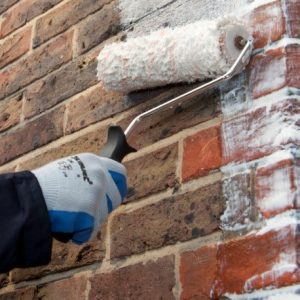Peter Cox Ltd, the UK’s leading Damp, Woodworm, Rot and Rising Damp specialists, details its masonry solution to reduce rainwater penetration and combat heat loss
Keeping warm and dry this winter!
The recent bout of torrential rain from the tail end of Hurricane Helene has focused everyone’s minds on the need to ensure the properties we manage are in ‘good order’ for the coming winter months.
 Keeping the building dry on the outside
Keeping the building dry on the outside
It is really important we keep as much of the moisture away from the outside of a building because if masonry absorbs moisture and becomes wet then the thermal transfer is considerably increased. Tests undertaken at Portsmouth University in a recent experiment calculated that solid 225mm thick brickwork that becomes wet through rainwater can lose up to 29% more heat than their dry equivalent! So what can we do?
Check gutter and downpipes, valleys and parapets and ensure all rainwater is being safely discharged to the ground and into drains. Regular maintenance to unblock gutters and remove leaves should be undertaken after the last of the autumn leaves have fallen and any cracks repaired or rainwater goods replaced.
Defective areas of pointing and flashings should be checked and replaced or repaired to prevent further water ingress. Seals around window and door frames must also be checked and repaired as necessary
In some cases despite all the above measures being undertaken the walls will naturally absorb moisture due to their porosity. Normally this would not be an issue as heavy sustained patterns of rainwater rarely cause damp penetration to spoil decorations BUT the loss in thermal efficiency is massive and will lead to a wet wall being cold and form a ‘condensation trap’ on the inside of the property.
An effective solution from Peter Cox
The solution to dealing with porous masonry is to use one of the new ‘vapour permeable masonry protection creams’ currently available. These ‘waterproof’ the outside of buildings yet still allow the building to breathe and because they can penetrate as much as 10mm into the masonry surface they are not degraded by UV light or erosion and once applied correctly can last for over 10 years.
The cream consists of a combination of Silane and Siloxane, is white in colour, but dries to a completely clear finish 48 hours after application and importantly still allows the wall to breathe. This means the wall remains dry and therefore less prone to heat loss through thermal transfer, and less likely to be affected by condensation at the same time.
Peter Cox Ltd
Tel: 0808 1208737
Please note: this is a commercial profile.













